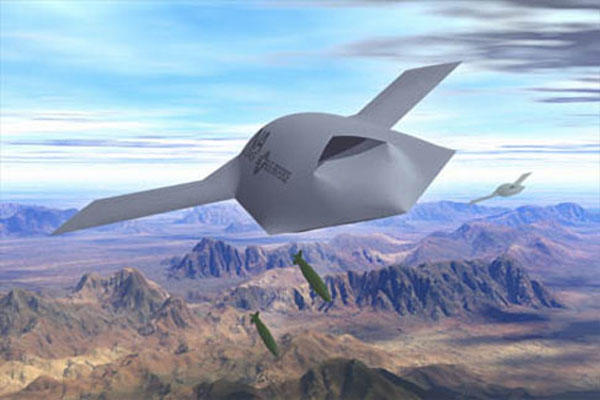The Air Force would lose about $460 million from its development program to build the next generation long range, stealth bomber under the proposed changes to the 2016 defense budget by the House Armed Services Committee.
Plans to begin a competition to select a contractor to build the new bomber, called the Long Range Strike Bomber or LRS-B, have been delayed, according to HASC officials. The proposed cut to funding for the bomber program in 2016 would bring the developmental funding for the effort down to $786 million for the year.
"The proposal authorizes the full amount for the program that the Air Force can execute in FY16 (fiscal year 2016), given contract award delays. Additionally, the Chairman instructs GAO to complete an assessment of technology challenges and cost implications associated with LRS-B," the HASC language writes.
As a result of the slipped schedule for the competition, the Air Force would not be able to spend the full amount it has requested for the program, according to a HASC aide.
HASC officials told Military.com that the delayed contract award for the LRS-B program in 2015 allows the committee to reallocate funding elsewhere in 2016.
"We have a late contract award at the end of fiscal year 2015. That is the reason for the delay of the execution of the funds in 2016," a Congressional staffer said.
The Air Force ultimately plans to acquire as many as 80 to 100 new bombers for a price of roughly $550 million per plane, Air Force leaders have said.
Over the last two to three years, the Air Force has worked closely with defense companies as part of a classified research and technology phase. So far, the service has made a $1 billion technology investment in the bomber.
Northrop Grumman is competing against a partnership of Boeing and Lockheed Martin for the rights to build the bomber. Northrop Grumman ran a regional Super Bowl ad pitching the company's experience building Air Force bombers.
The new LRS-B is slated to replace the Air Force's bomber fleet to include the B-2 stealth bombers.
Related Video
Although much of the details of the LRS-B development are not publically available, Air Force leaders have said the aircraft will likely be engineered to fly unmanned missions as well as manned missions.
The new aircraft will be designed to have global reach, in part by incorporating a large arsenal of long-range weapons. The LRS-B is being engineered to carry existing weapons as well as nuclear bombs and emerging and future weapons, Air Force officials explained.
In particular, the aircraft is being engineered to evade increasingly sophisticated air defenses which now use faster processors and sensors to track even stealthy aircraft at longer ranges.
-- Kris Osborn can be reached at kris.osborn@military.com



























